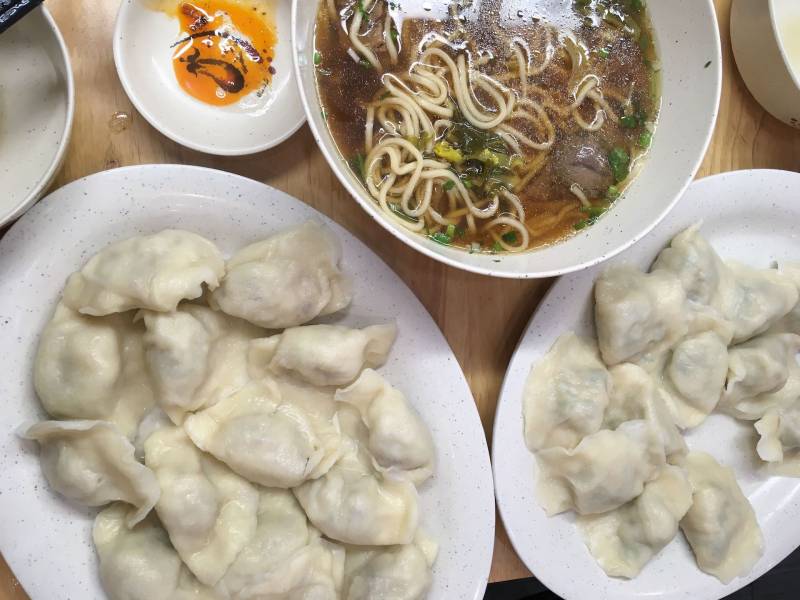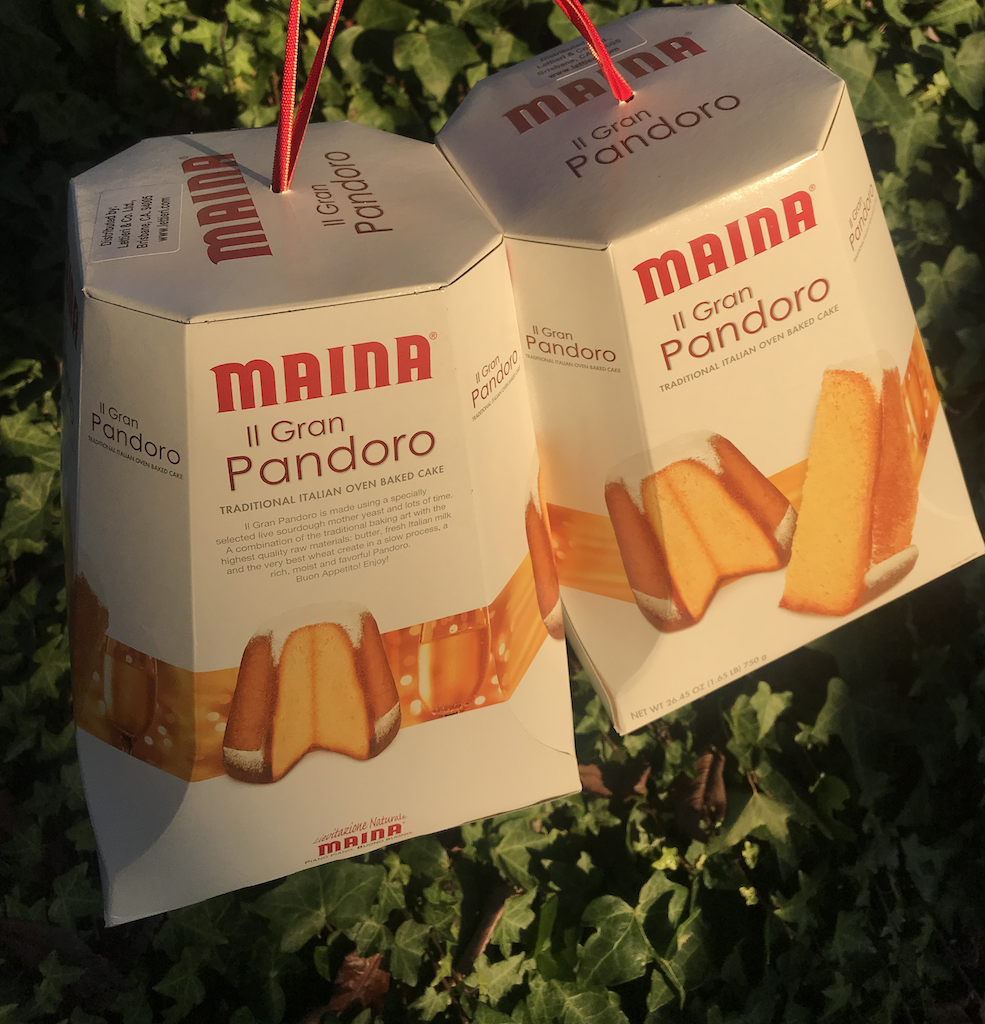Dining in the Bay Area can mean lots of optimized salad bars and grain bowls inhaled between meetings. Here, KQED staffers share recent meals that demanded we slow down and enjoy them thoroughly.
Flavors Worth Finding: Toothsome Dumplings, Holiday Pandoro and More

Northern Chinese Dumplings at Yuanbao Jiaozi
Dumplings are my happy food. I particularly love the Northern Chinese style of doughy, plump dumplings. You can feel the handiwork in each piece, hand-rolled and adorned with perfectly imperfect dimples. At Yuanbao Jiaozi, located in San Francisco’s Outer Sunset neighborhood, it’s fun to watch the ladies in the window working steadily and skillfully to create these ingot-shaped treasures. Each dumpling is boiled to order and delivered to your table from the vat of scalding water.
My mom, who grew up in Taiwan, was delighted by Yuanbao Jiaozi’s unique offering of seafood dumplings during our dinner. Standouts included sole fish and shiitake mushrooms, sole fish and green pepper, as well as the shrimp and zucchini dumplings—all filling combinations I had never come across in my food expeditions in the Bay Area.
I can’t order dumplings without a side of noodle soup. Nothing like carb on carb! For this visit, I ordered the pickled Chinese cabbage and beef noodle soup, whose bright, acidic flavors and beefy broth complemented the dumplings’ more subtle profile.
What I love about Yuanbao Jiaozi’s dumplings is that firm, doughy consistency. In Italy, this prized texture is described as “al dente.” In Taiwan, it’s referred to as “Q,”, pronounced like the letter, often used to describe the ideal "toothiness" of boba or stewed beef tendon. Well, Yuanbao Jiaozi’s dumplings definitely have that “Q.” Dipped in a bit of the chili oil provided in jars at each table, with a steaming side of noodle soup—that’s pure comfort to me.—Vic Chin, Coordinating Producer, Check, Please! Bay Area

Pandoro, a Satisfying Winter Dessert
As a child, I made the compromise of eating around the raisins and candied fruits of panettone. A holiday dessert tradition that spread from Italy to East Africa and South America, panettone’s tall, trapezoidal boxes hang like decorations on Christmas across many homes around the world. Lately, instead of leaving a trail of dried fruits on my plate, I opt for pandoro, a cousin to panettone that features a similarly egg-enriched, fermented dough without any interruptions from lifeless fruits. Finished off with a dusting of sugar on its distinct triangular ridges, pandoro is a sight to behold. (Some cut the bread horizontally and stack it to resemble a snowy Christmas tree.)
Pandoro and panettone’s appeal live in their airy, soft texture, which is achieved through the sweet bread’s patient rising period. Both breads pair well with coffee and tea, and absorb whipped mascarpone and other toppings especially well when toasted. Never a cloying dessert, pandoro is balanced in its sugar—a satisfying sweet that doesn’t leave you sluggish.
May it be through the local East African population or the region’s European inclinations, Bay Area grocery stores seem to always carry panettone and its different iterations from December into the new year. Some years back, I noticed Trader Joe’s offered a chocolate panettone. Though markedly sweeter, chocolate is much more acceptable than dried fruit in my opinion. One can also find the holiday sweet bread at various Eritrean and Ethiopian specialty food stores like Zion Market on Oakland’s Telegraph Avenue. Lucky for me, the variety means I never have to eat around raisins and candied oranges.—Ruth Gebreyesus, Food Reporter and Visual Arts Columnist
Cha La Pov at Nyum Bai
Since its brick-and-mortar opening in 2018, Cambodian eatery Nyum Bai has become one of the most well reviewed restaurants in the Bay Area, collecting a Bib Gourmand pick from Michelin and a semifinalist nod from the James Beard Awards along the way. Even with this fanfare, chef Nite Yun’s restaurant, tucked in a corner of the complex across from Fruitvale BART station, continues to offer affordable and delightful dishes like cha la pov, a stir fried kabocha squash dish with ground chicken and eggs, topped with chrysanthemum and scallions.
Served with a bowl of rice, the plate featured a mix of ingredients that I hadn’t seen together. Yet it delivered a familiar joy—a balanced offering of starch and protein, lightly sweet but decidedly savory. I’m sometimes too lazy to cook kabocha at home because its shell can be more work than a softer squash, so I was happy to encounter the seasonally appropriate gourd at Nyum Bai. And though I can’t say I detected the chrysanthemum in the dish, the scallions provided a bright zing—both visually and in terms of taste.
The part of cha la pov I’m still thinking about is the ground chicken: clumped together by the egg, it provided a really satisfying bite. I’d never think to mix chicken and eggs in that way, but now I can’t help but think chicken is a great alternative to pork, and even a first choice as a flavor-absorbing, textured meat.
The next morning, I ate the leftover rice and cha la pov for breakfast. Maybe it was my hunger or the rice and stir fry spending all night mingling in the same container, but it tasted even better.—Ruth Gebreyesus